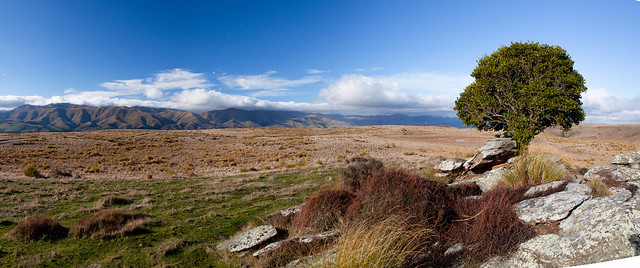
Take the road known as the Pig Root inland from Palmerston and you'll find yourself approaching a tiny township known as Dunback. Climb Dunback Hill to the southwest and you'll find yourself in as pretty a piece of high country as you'll find. I found myself in a perfect ten minute window up here when the wind dropped and the sun warmed my shoulders. Tussocks whispered. A fleeting, perfect moment, there and then gone. A singularity in a universe of time.
Continue along Macraes Road and you'll find the landscape transformed. 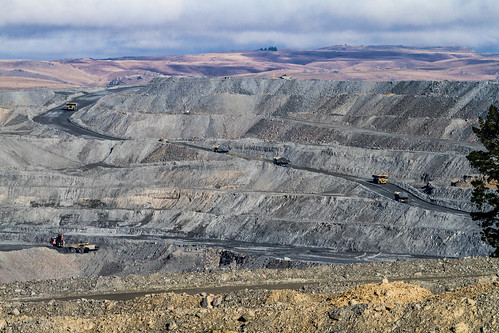
Over the last 24 or so years, kilotons of Ammonium nitrate explosive and millions of dollars of heavy machinery have created the massive network of pits and shafts that make up Oceana Gold's Macraes mine.
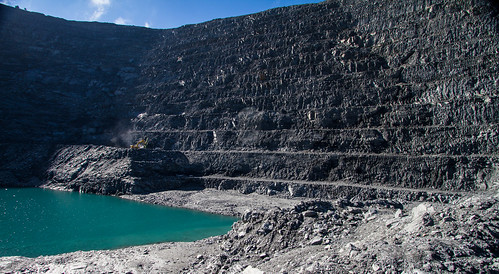
To say it's big is a ridiculous understatement. You just can't get it from the road and you still don't get how large the operation is from the public viewing platform. You can only start to get your head around how big it all is when you enter the mine as I did, to take some pictures of the big Hitachi EX3600 digger for a client a few weeks back.
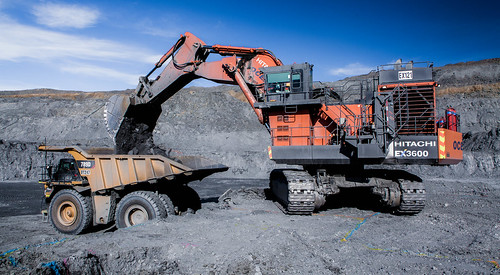
Once I got the shots I needed, I was lucky to be taken on a brief tour by my minder. It was mind blowing. The scale of the place is massive, and you only just comprehend it when you get up close to the machinery. This is the Caterpillar 789D, a 78 litre turbo diesel truck with a 2,000 litre fuel tank and 200 tonne carrying capacity.
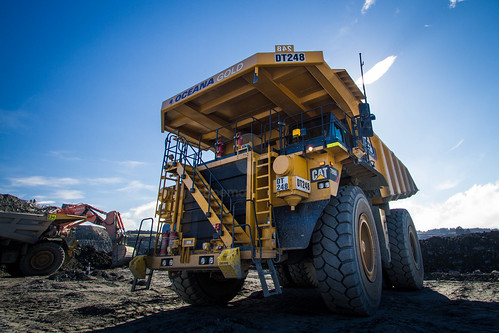

The Macraes mine operates around the clock, blasting, digging and hauling rock, to dump the waste in terraced mountain ranges. The gold is extracted from the rock in a chemical process using cyanide. This is the processing plant, sitting among massive man-made terraces of spoil:
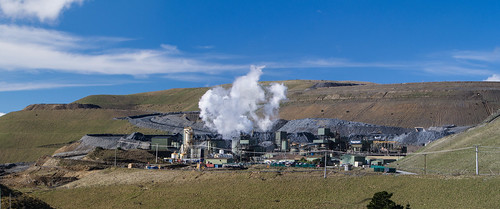
Of course the deep pits will fill with water if allowed to, so it's pumped out, and along with some of the waste from the extraction process, forms shallow lakes in this strange sculpted landscape.

I have to admit I had mixed reactions to all of this. My first was the Tonka Toy boy's thing. Excitement about being around these great machines and the works of man. Then of course, a kind of despair at what had been done to the land here in such a short space of time. But then I discovered there had been mining in this spot for well over 100 years. Keep taking the road past the processing plant and you come to a delightful little historic reserve known as Golden Point. You can see the vapours from the nearby plant up on the hill above.
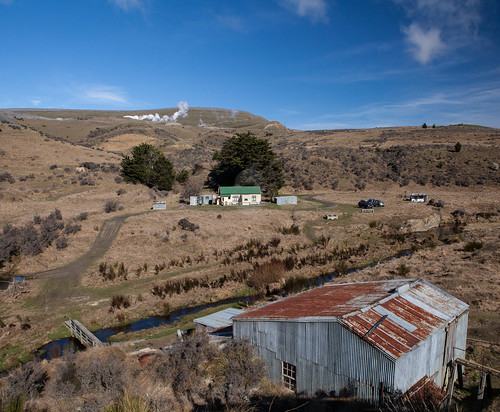
From 1891 to 1936, 70,000 tons of scheelite (tungsten ore) and 13,000 ounces of gold were taken from Golden Point. Compare that to the approximate 500oz Oceana Gold gets from 14,250 ton of ore every day.
The workers lived on site, in a collection of sod cottages and other dwellings. The process of mining wasn't too dissimilar to that of today. The ore was blasted and hauled out from shafts, water was piped in to drive stamping batteries, and the gold was extracted by the same chemical process from the crushed rock.
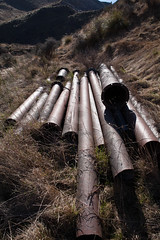
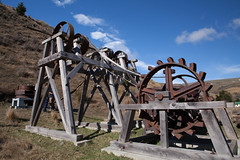
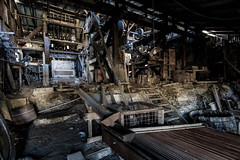
Because of the ore types and extractive methods used, plenty of New Zealand's old gold mining areas have water contamination issues... sometimes mercury, sometimes cyanide. They're great places to visit, but you should be careful about drinking the water.
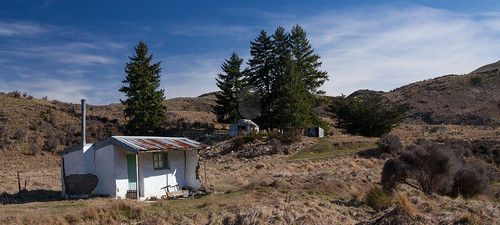
Will Macraes be as delightful in 100 years time? They are undertaking landforming works with the spoil, but I have to say for now the terraced earth sculptures look odd in the otherwise folded landscape. Maybe that will improve with more vegetation. I just hope the groundwater is protected from contamination. This is the catchment for the Shag river. Economy versus environment... same old battle. How much of our environment are we willing to modify to maintain our standard of living? The only thing that's certain is that one day, many, many years from now, no matter what we do, the earth will recover. But in all likelihood, we'll be gone. The planet sustains us, but like the trilobites and the ammonites and the dinosaurs, it doesn't care about us. It just moves on. And one day, just like all of us, it too will be gone. Another singularity in an infinite universe.

No comments:
Post a Comment